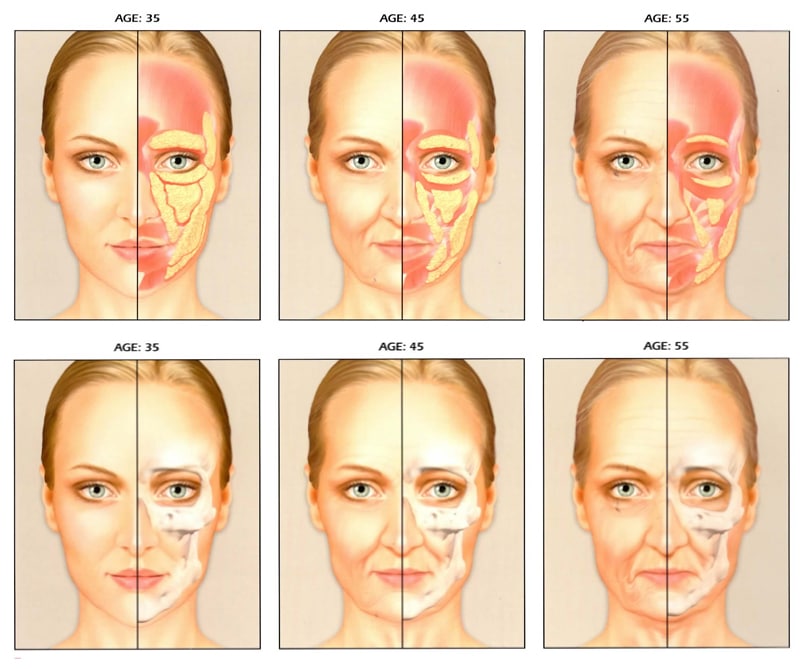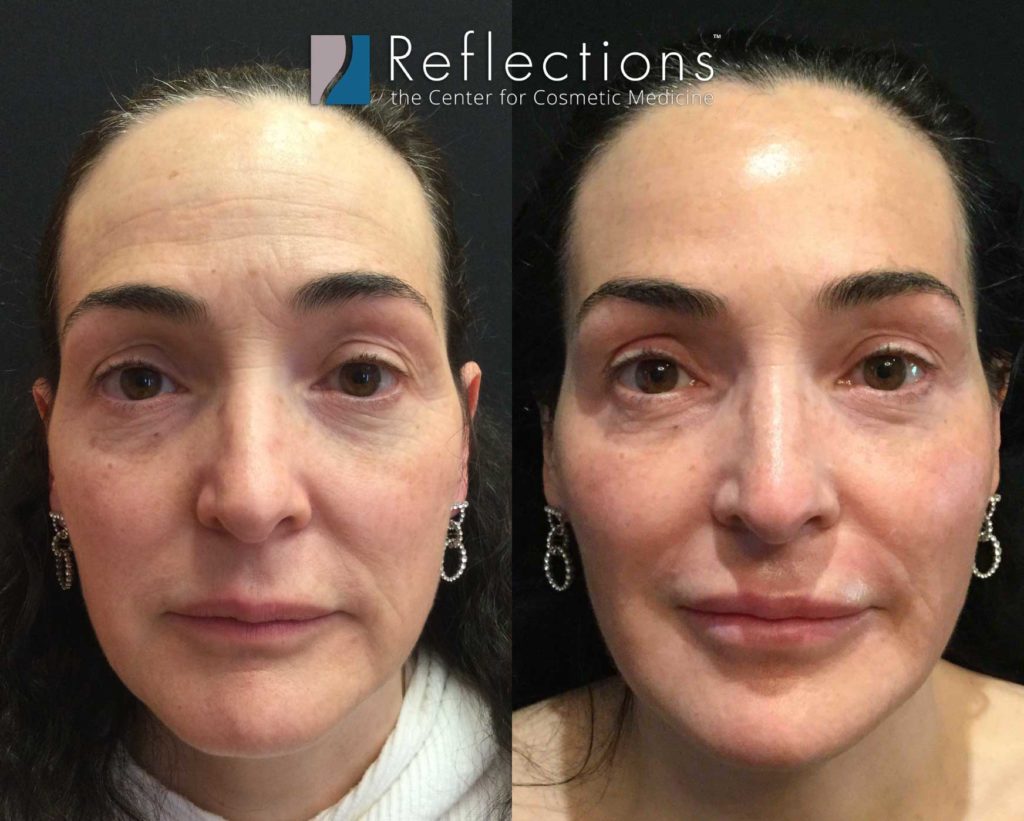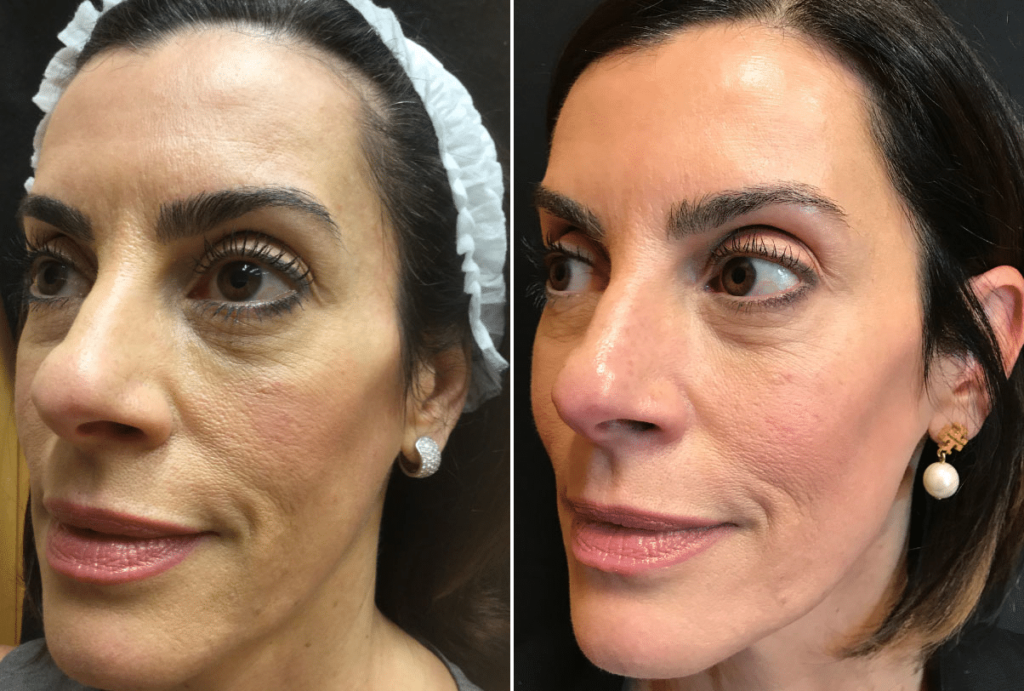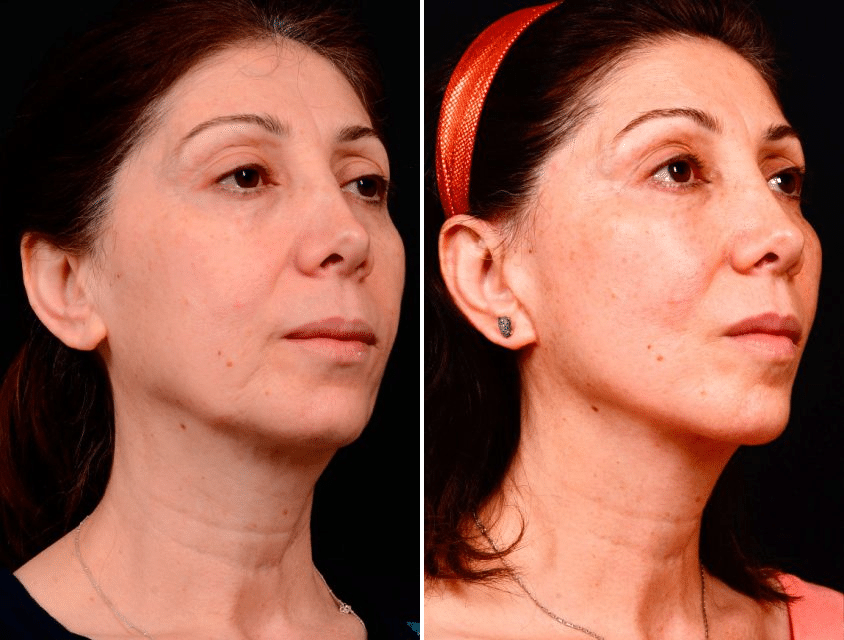One of the exciting things about cosmetic surgery these days is that there are so many great facial options for patients; but because there are so many options, it becomes a little bit difficult to navigate through all of the information that’s out there. Very often, it becomes confusing hearing different things from different doctors and friends. Ultimately, it comes down to finding a surgeon or aesthetic physician who you trust. As a plastic surgeon at Reflections, I get a lot of questions about dermal fillers and fat transfer. While I genuinely recommend both products to patients, depending on their goals I may favor one over the other for a specific patient.
A Note About Natural Results with Fat Transfer & Filler – And What Makes Them Look Weird

Both fillers and fat transfer are used to restore volume that we lose in our faces as we age. Lost volume is not the only cause of aging – loose muscles and aging skin (crepey, thinning, rough texture, looseness, and discoloration) are a big part of your perceived age, too. The options discussed here are only going to add volume, so they may not be the only procedure you would need, if you were to do every possible thing to age gracefully.
In the ideal situation, you’re only restoring what was lost – that’s what creates the most natural results – and that’s the volume from the lost fat pads and any bone resorption. However, sometimes people try to push fillers as a way to lift the face – and they truly cannot do that well. You see that claim far less often with fat transfer, because fat transfer is a surgery and if you’re doing a surgery, you might as well do a lifting surgery as well, because we can get great facelift results under local anesthesia these days. When you over-fill with any substance – fat, hyaluronic acid fillers, biostimulatory fillers, etc. – it looks bad. It looks weird. And it doesn’t create the effect the patient is after. If you want a lift, you need a lift – and that’s a surgery.
Dermal Fillers: Two Different Types to Understand
There are 2 classes of dermal fillers that are FDA-Approved (i.e. proven safe and reliably effective). They are either biostimulatory fillers or hyaluronic acid fillers.
Hyaluronic Acid Fillers
Hyaluronic acid fillers are likely the ones you think of when you hear anyone say “fillers” – they’re soft, create immediate results, and last from 6 months to 2 years (and maybe a little longer, depending upon where we put them). These fillers do a great job mimicking lost fat in the face, but are not so great mimicking bone or lifting and tightening loose skin or muscles. It’s important to have the right HA filler formula (brand) placed in the right place, in the right amount. This requires the skill and experience of an expert injector.

I tend to recommend these for patients who are:
- Change any facial feature (not just anti-age)
- Ant-Aging that’s unevenly spread across the face – maybe it’s just your eyes, or your cheeks have lost a lot more than everywhere else (for widespread, even loss, other options are better)
- Those who need volume in just a few places – these make the most sense financially and otherwise when you need just a few teaspoons of volume in a few specific places – when you get up to 6+ syringes, it probably makes more financial sense to consider other options, too (provided you are open to other treatments – if you’re not, that’s okay, too)
- New to cosmetic treatments or not 100% sure they’ll love the results (because these are reversible and temporary, which is a great anxiety-reducing benefit)
- Those who want a big, immediate change – especially for a big event coming up soon
Biostimulatory Fillers
Biostimulatory fillers are something most cosmetic patients aren’t really aware of, but have been around for decades and are incredibly safe and natural. These fillers work by stimulating the body to build more collagen, and because any change where the body has to grow new cells takes time, the results are not immediate, they take around 3-6 months to show up. They come as a powder and depending upon how the product is mixed and injected, and in what planes of tissue it is injected, it can create several different effects, including mimicking bone, skin firming, and soft-tissue volume-building. For the sake of this conversation, we’re going to skip over the skin firming abilities, since we’re comparing options for restoring volume.

I tend to recommend these for patients who are:
- Widespread, diffuse facial volume loss – as opposed to specific areas with big deficits and/OR has bone resorption
- Willing to wait for results – perhaps even prefers results that show up slowly over time, to keep their treatments as discreet as possible
- Patients over 50 who need significant volume and who haven’t done previous collagen-stimulating treatments
- People who have had facelifts and want to maintain the results without additional surgery
- Young patients in their late 30’s to 40’s who want to avoid aging
- People who have lost weight and don’t like how drawn or gaunt their faces look
The Natural Solution: Transfer Your Fat from Your Midsection to Your Face
The other option that I find to be really exciting for my patients is fat transfer. I’ve been in love with fat transfer since the day I started doing it about eight years ago.
Fat transfer can be done under local anesthesia, or under general anesthesia – a lot of times, the decision for this is made by the other procedure(s) a patient is doing at that time. The most common procedure to have at the same time as fat transfer is a facelift, both of which can be done under local anesthesia.
Fat transfer is a pretty comfortable procedure. We numb up an area of your midsection (or another area, based on where you have a little extra fat), and we remove just a little bit of fat – it doesn’t take much to make a big change in the face. We clean up the fat using a process that removes any blood or other serums, oils, or tissues, so we’re left with clean, pure fat to inject.
With fat transfer, what I’m able to do is remove a patient’s own fat and use it, instead of the filler, to volumize their face. It can be used under the eyes, in the cheeks, around the jawline, really, any of those areas that we attribute to facial aging. The reason that I love fat transfer is that it’s natural, and it lasts. One of the misconceptions that are out there is the possibility of developing lumps or irregularities or not knowing how much of the fat will survive.
Again, after doing thousands of fat transfer procedures, I’ve found that the take rate, or survival rate, of that fat transfer in my patients, is significant enough that all of my patients are happy with it. Luckily, if fat were to not take as dramatically it can always be touched up. My approach to volumizing the face with fat, unlike one of the more common approaches, is that I don’t overfill the face for a more natural look.
Fat Transfer

I tend to recommend fat transfer for:
- Fat transfer is great for patients with skin of color or those who might scar poorly, because there aren’t the scars of a facelift
- Fat transfer is great for patients who don’t want to age – and are willing to do whatever they can to avoid it – because a youthful face tends to have more fat, naturally
- Those who want something natural, and want to avoid synthetic fillers
- Those who want a natural result that ages beautifully and requires less upkeep
- Those who are willing to invest now, both in terms of downtime and cost, so that they age well long-term.
- Those who have had facelifts and their skin is relatively tight, but they’ve continued to lose volume and need a refresh or who want to maintain the results
- Those who look very hollow or gaunt, especially around the eyes
- People who have lost a lot of weight, and their faces look drawn or gaunt
Weighing Your Options
When deciding between fat transfer and synthetic fillers, there are several things that come into play when deciding which procedure is best for each patient. Recovery time is important if a patient has any events that are coming up. Also, the longevity of the procedure or how long the results will last should be part of the deciding factor. Synthetic fillers allow us to give our patients an immediate result. The result that we see at that time of treatment is essentially the final result. There may be a little bit of swelling that lingers for 24 or 48 hours, but typically, it’s a very quick recovery.
When it comes to fat transfer and recovery, there is definitely a little bit more recovery involved with the possibility of puffiness, swelling and maybe a little bit of bruising that can linger for about a week or so. The important thing to remember is that even though it looks good within that week, it’s still developing and the final result is not yet present; whereas filler results are almost immediate.
Comparing the Options
| Hyaluronic Acid Fillers | BioStimulatory Fillers | Fat Transfer to Face | |
| Best For: | Problem areas, especially just in a few (1-3) areas | All-Over, diffuse small volume changes | Problem areas, especially when there are many and/or you want a long-term solution |
| When to See Results: | Immediately | 3-6 months | Immediately, but finalize around 3 months |
| Downtime & Recovery: | Rarely any – but can be swollen or bruised after, for up to 2 weeks; should be no soreness | Everyone will look different when they leave appointment (with a result they like) but the injected product is absorbed over a few days’ time; should be no soreness | Everyone will be swollen and bruised, and this lasts for 2-4 weeks; Mild soreness can happen, especially at donation site |
| Anesthesia & Numbing/Pain: | fillers have numbing medication mixed in, but we can also do nerve-blocking numbing injections | fillers have numbing medication mixed in, but we can also do nerve-blocking numbing injections | Local or general anesthesia |
| Invasiveness: | injections | injections | surgery |
| Cost: | $3,400 to $7,000 typically for full face. As low as $700 for a single area* | $4,000 to $9,000 typically* | $10,000 to $15,000 typically* |
Cost
Although fat transfer is more expensive than fillers, especially in patients who need a larger amount of volume, it becomes more cost-effective to do fat transfer. Another thing I like to discuss with patients to help guide them in their decision between fat transfer and filler is whether it’s the first time they’ve had fillers or any type of procedure, they may be more comfortable going with a procedure where the results are temporary. This allows the patient to “try it on” and see what it looks like.
Schedule a Consultation
If you’re interested in dermal fillers or fat transfer, we encourage you to contact Reflections today to schedule a consultation with one of our aesthetic practitioners. Our highly skilled surgeons and physicians are leaders in injectable cosmetics and look forward to helping you achieve your aesthetic goals.







